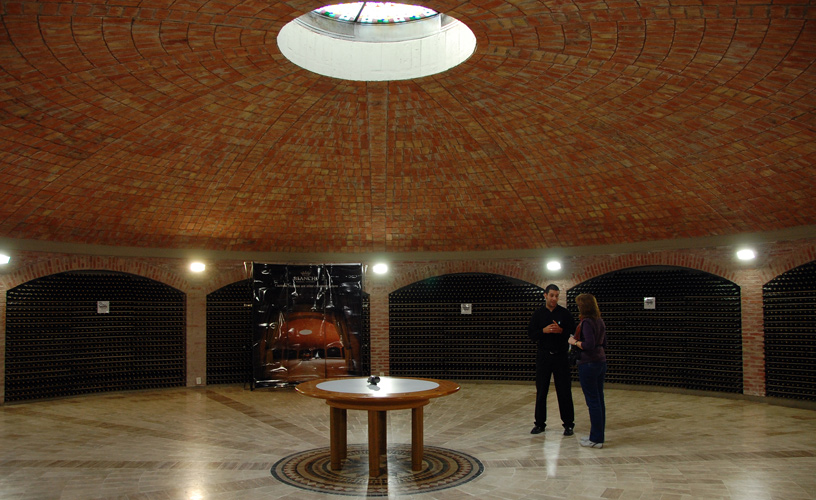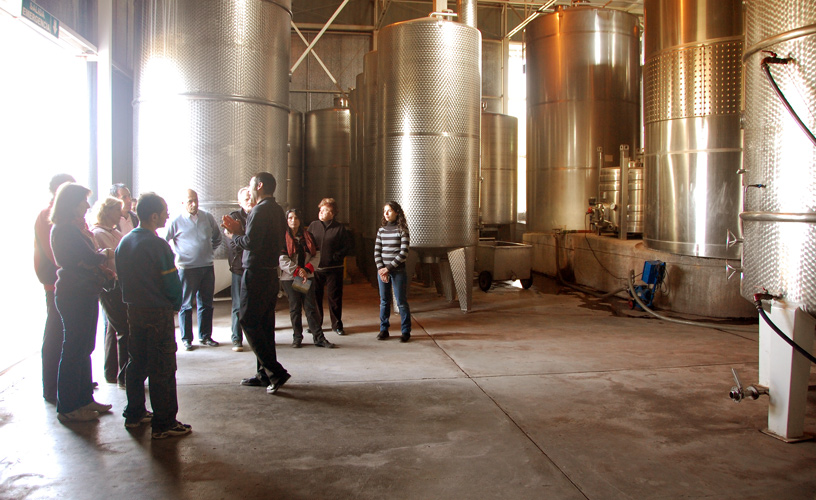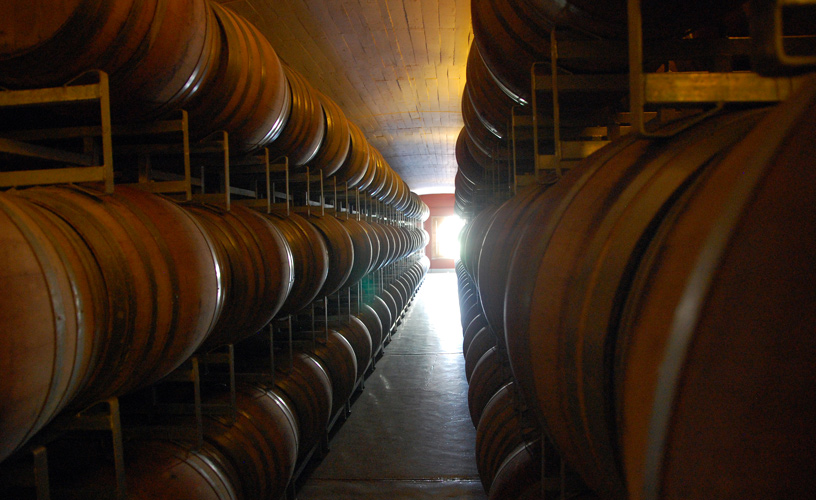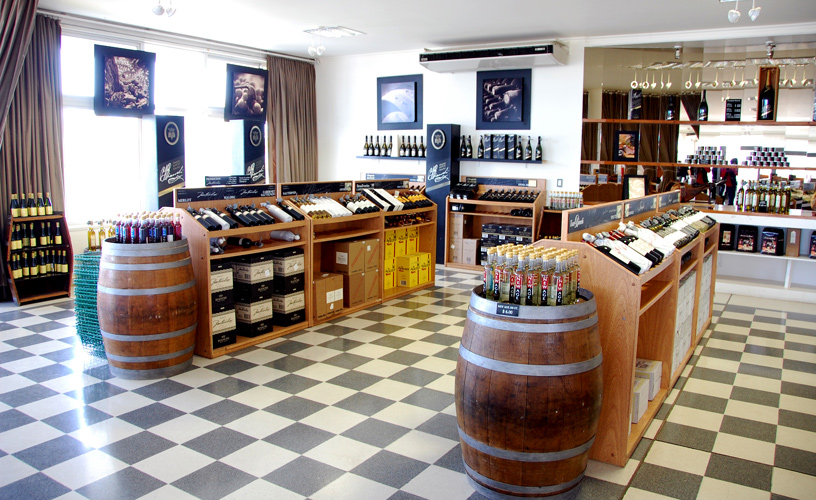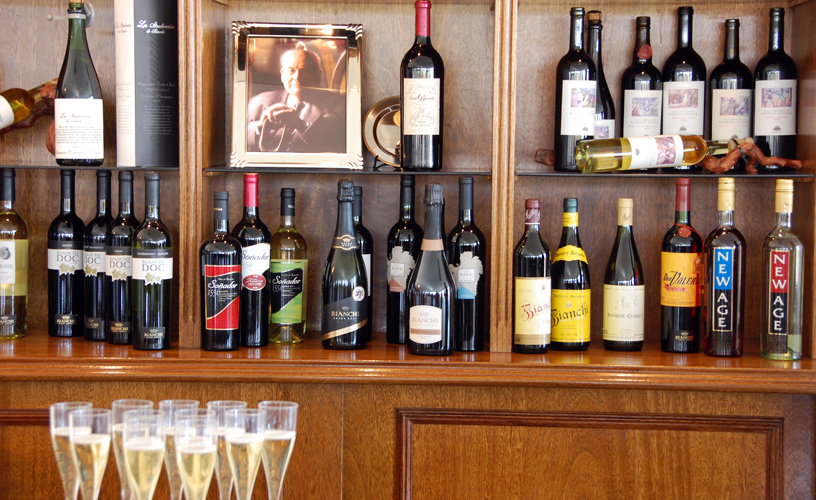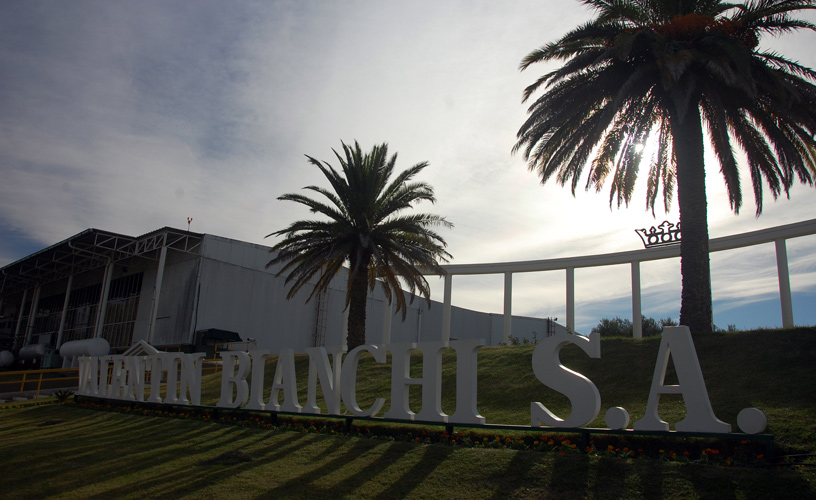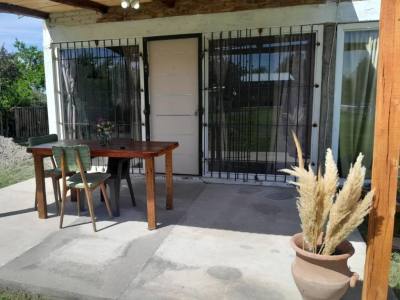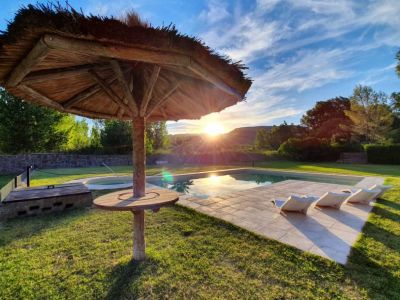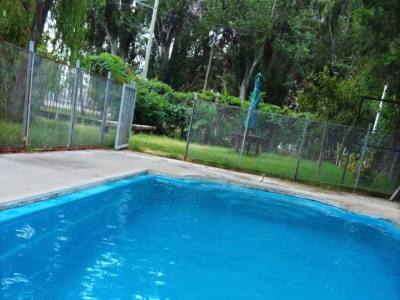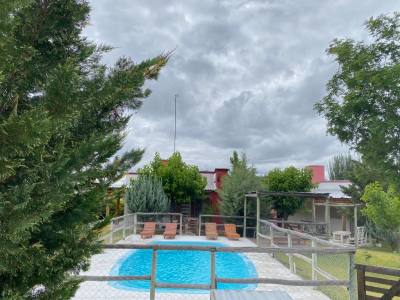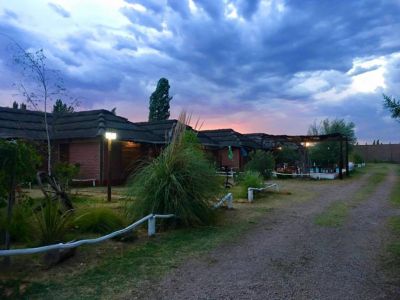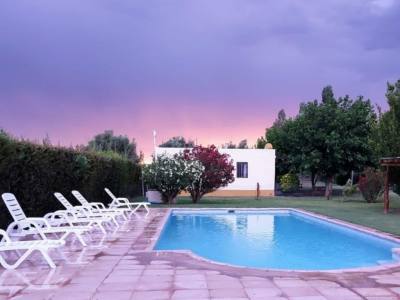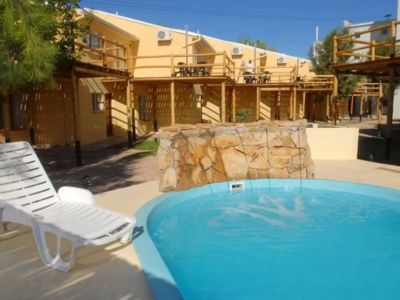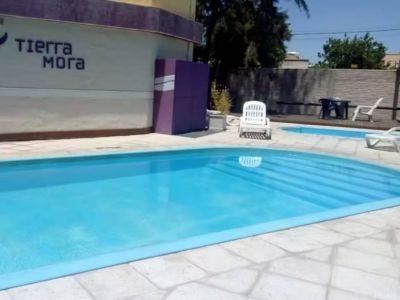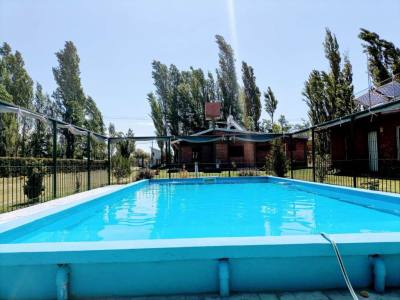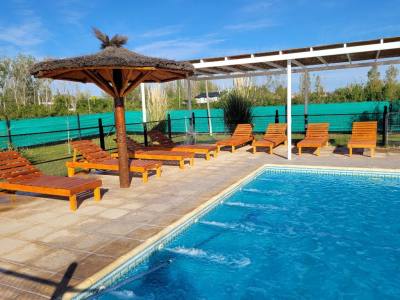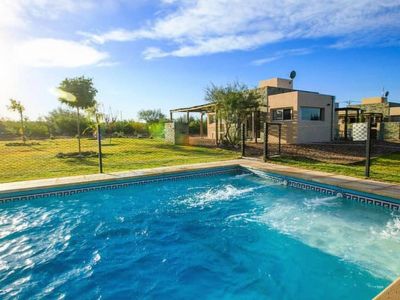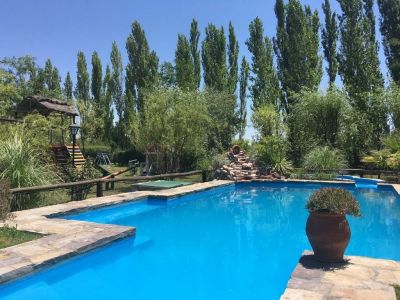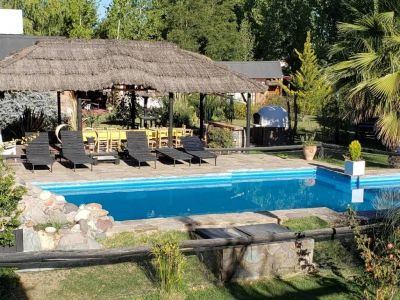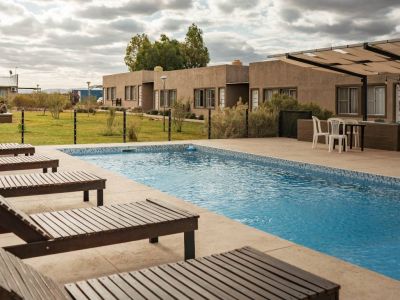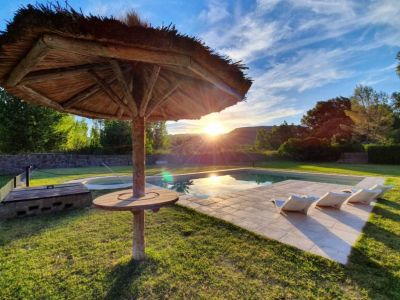We joined a group at the winery entrance and we were welcomed by a specialized guide. We entered in silence, as if asking for permission. Few workers appeared behind tanks and pipes of shining steel. Labor was constant but in a very quiet environment.
Huge stainless steel tanks were the first sample of mass production, measured in several millions of liters of wine being processed.
The harvest had been left behind and with it, the timed tasks to incorporate thousands of kilos of grapes that get to the wine press almost at the same time.
The wines were being bred. Everything around was calm so that the beverage would settle and keep the necessary features. Once the fermentation, cleaning and clarification stages were over, the roads towards each end product had begun to fork. One part would be turned into young wine and the other into age-worthy wine.
The former would pass onto the central winery to be bottled and labeled. The latter would make contact with the French oak casks to mature inside the underground cellar. Three factors are essential in the basement: a steady temperature, constant humidity and dim light.
The wooden casks are used during two or three years; afterwards, they are discarded. While inside the casks, the enologists continue to control de wine, analyzing the sugar, acidity and chromatic features of the product, until the end of the process.
We learned that in the last few years it has become usual for some white wine to age in wood to manage more body, intense aromas and strong personality. Its pigments or flavonoids increase the yellowish hue.
Sparks to Toast
The longed-for moment to start learning how to make sparkling wine or champagne finally arrived. Bianchi is specialized only in extra brut and uses a French method called champenoise.
We paid attention to the details described by Guillermo and found out two varieties of grape are used in a certain proportion: white chardonay and red pinot noir. The harvest is carried out early and the winemaking process is the same as for white wine, that is to say, that the skin is removed so that the must is not tinged.
The base wine is passed into a thicker bottle that may bear the inner pressure in order to undergo a second fermentation. For such purpose, yeast and a small amount of sugar, called the liqueur de tirage, is added as well as selected grapes.
Guillermo answered some questions saying that: “Powder clarifiers, such as bentonite, are incorporated. It resembles volcanic soil, increases volume and carbon dioxide gas is generated inside the bottle. Sediments decant on the bottom and a temporary cork is used”.
They ferment during 30 days and then remain 18 months in the cellar waiting for aromas and flavors to mature and to achieve more complexity. The next step is autolysis, that is to say, the integration of yeast that will do their job and die.
The guide said: “When they precipitate, the lees will settle in the bottle shoulder and neck. How do we remove them? Some machines performing soft movements transfer the sediment to the bottle neck. Afterwards, the bottles are passed onto a cold chamber where the content is stabilized and the necks are frozen”.
The bottles are opened by hand and the carbon dioxide inside the bottle forces out the sediment plug. At least three pressure atmospheres should remain in the bottle so that the wine is considered sparkling. Then the liqueur d’expédition is added. Afterwards, a cork is inserted with a wire cage and the labels are placed.
Happy New Year... Feliz Año Nuevo... Feliz Ano Novo
The entire process is almost a craft and it takes two years. The same method has been used ever since the seventeenth century, the times of French monk don Perignon. Only some parts of the process have been enhanced through the use of machinery.
Sommelier Guillermo Oyarzú accompanied us to the spacious hall with huge windows overlooking the vineyards. He made us taste the young lines which had not been stored in wood, the Particular line and the Famiglia Bianchi line.
In each case, his clear explanation let us perceive the aromas, the taste in mouth and the finish of the wines offered. The line variety is very broad and new tastes such as port, DO line or Teatro Colón collection, to name a few, are constantly incorporated .
The history of the winery and of the Bianchi family, the knowledge and the cordiality shown by Guillermo made us promise to go back, with more time to spare, a time worthy of the serenity of good wine.
Mónica Pons
Eduardo Epifanio
Phone: +54 260-4449600
